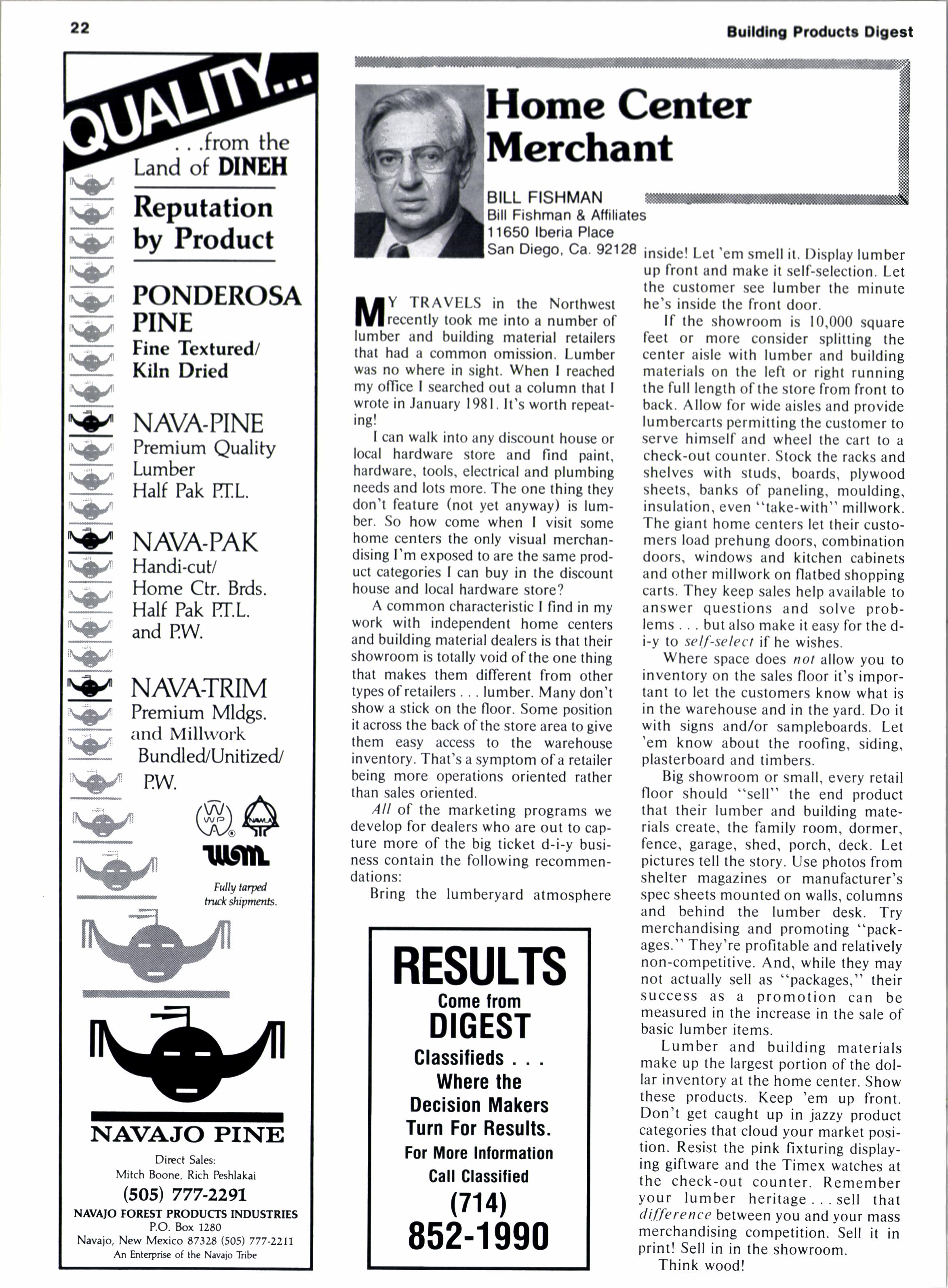
2 minute read
ome Center erchant
Bill Fishman
Bill Fishman & Atliliates
11650 lberia Place
San Diego, Ca. 92128 llY
Travels
in rhe Norrhwest lUlrecently took me into a number of lumber and building material retailers that had a common omission. Lumber was no where in sight. When I reached my office I searched out a column that I wrote in January I981.lt's worth repeating!
I can walk into any discount house or local hardware store and find paint, hardware, tools, electrical and plumbing needs and lots more. The one thing they don't feature (not yet anyway) is lumber. So how come when I visit some home centers the only visual merchandising I'm exposed to are the same product categories I can buy in the discount house and local hardware store?
A common characteristic | find in my work with independent home centers and building material dealers is that their showroom is totally void of the one thing that makes them different from other types of retailers lumber. Many don't show a stick on the floor. Some position it across the back of the store area to give them easy access to the warehouse inventory. That's a symptom of a retailer being more operations oriented rather than sales oriented.
All of lhe marketing programs we develop for dealers who are out to capture more of the big ticket d-i-y business contain the following recommendations:
Bring the lumberyard atmosphere inside! Ler'em smell it. l)isplay lumber up front and make it self-selection. Let the customer see lumber the minute he's inside the front door. lf the showroom is 10,000 square feet or more consider splitting the center aisle with lumber and building materials on the left or right running the tull length of the store from front to back. Allow for wide aisles and provide lumbercarts permitting the customer to serve himself and wheel the cart to a check-out counter. Stock the racks and shelves with studs, boards, plywood sheets, banks of paneling, moulding, insulation, even "take-with" millwork. The giant home centers let their customers load prehung doors, combination doors, windows and kitchen cabinets and other millwork on flatbed shopping carts. They keep sales help available to answer questions and solve problems but also make it easy lor the di-y to se{/'-select if he wishes.
Where space does not allow you to inventory on the sales floor it's important to let the customers know what is in the warehouse and in the yard. Do it with signs and/or sampleboards. Let 'em know about the roofing, siding, plasterboard and timbers.
Big showroom or small, every retail floor should "sell" the end product that their lumber and building materials create, the family room, dormer, fence, garage, shed, porch, deck. Let pictures tell the story. Use photos from shelter magazines or manufacturer's spec sheets mounted on walls, columns and behind the lumber desk. Try merchandising and promoting "packages." They're profitable and relatively non-competitive. And, while they may not actually sell as "packages," their success as a promotion can be measured in the increase in the sale of basic lumber items.
Lumber and building materials make up the largest portion of the dollar inventory at the home center. Show these products. Keep 'em up front. Don't get caught up in jazzy product categories that cloud your market position. Resist the pink fixturing displaying giftware and the Timex watches at the check-out counter. Remember your lumber heritage sell that di.fference between you and your mass merchandising competition. Sell it in print! Sell in in the showroom.
Think wood!









